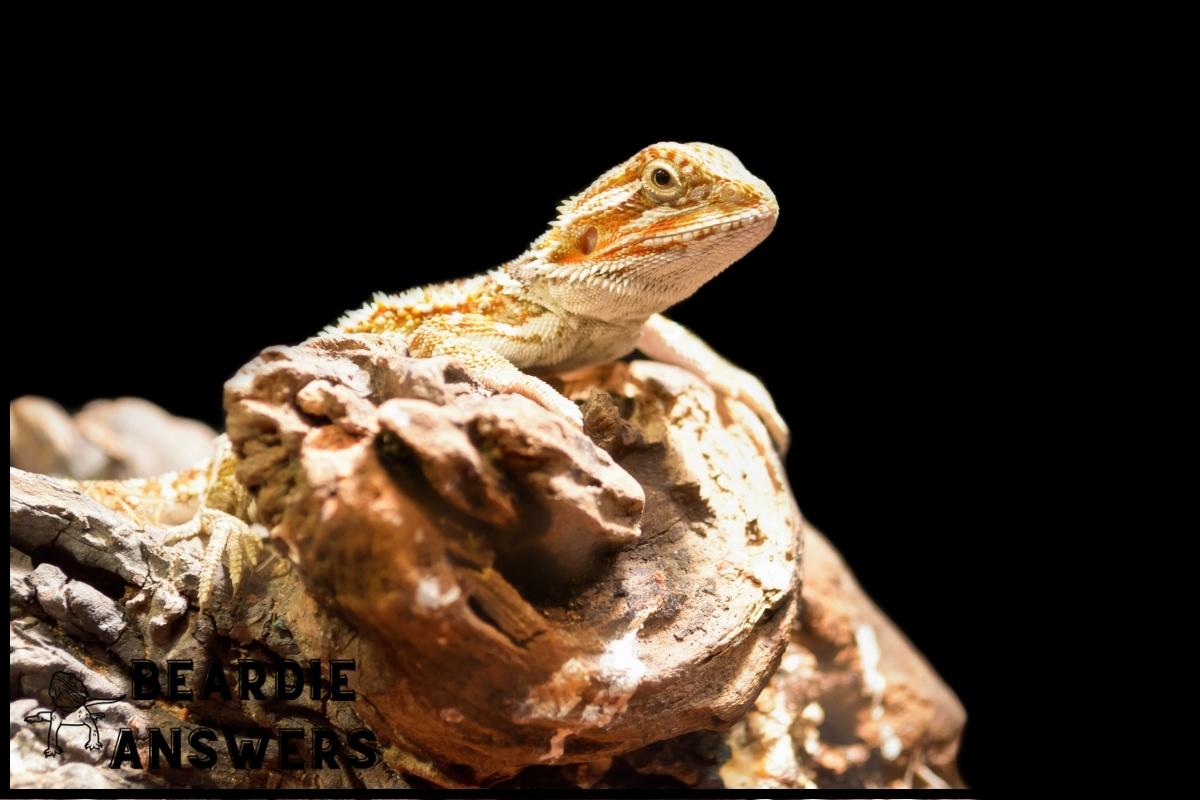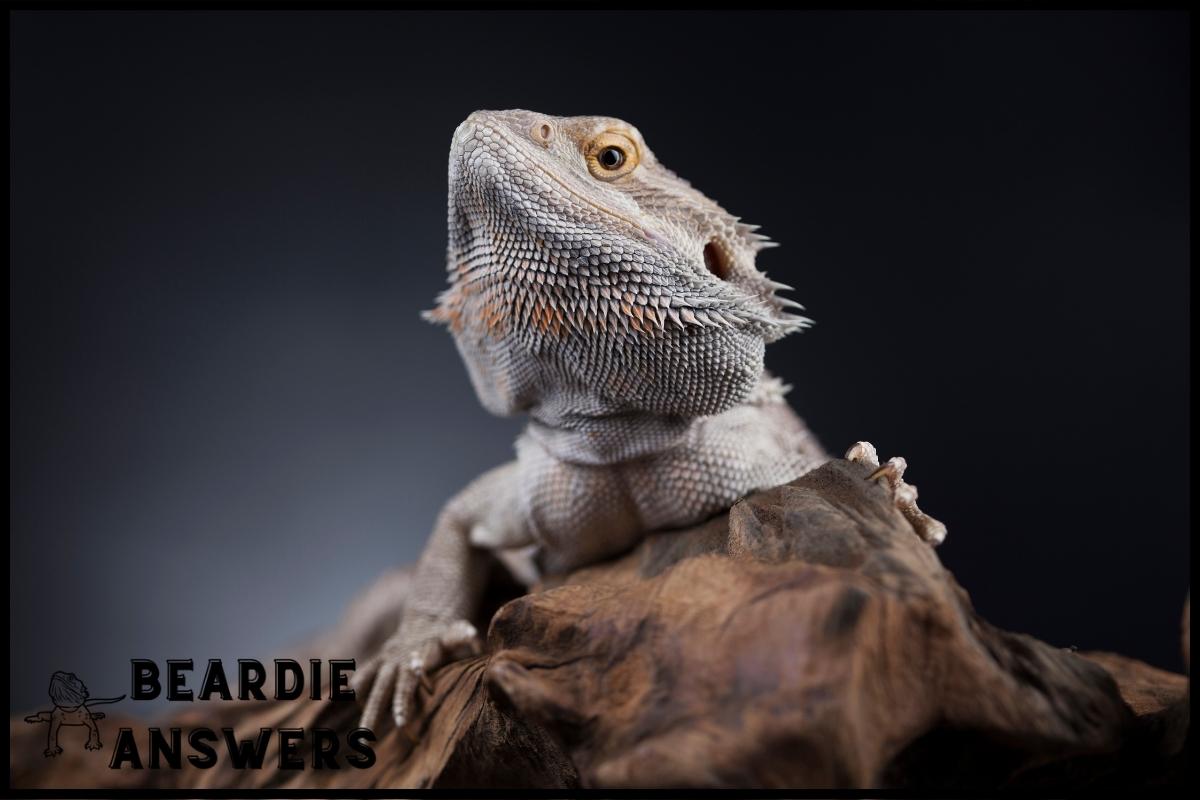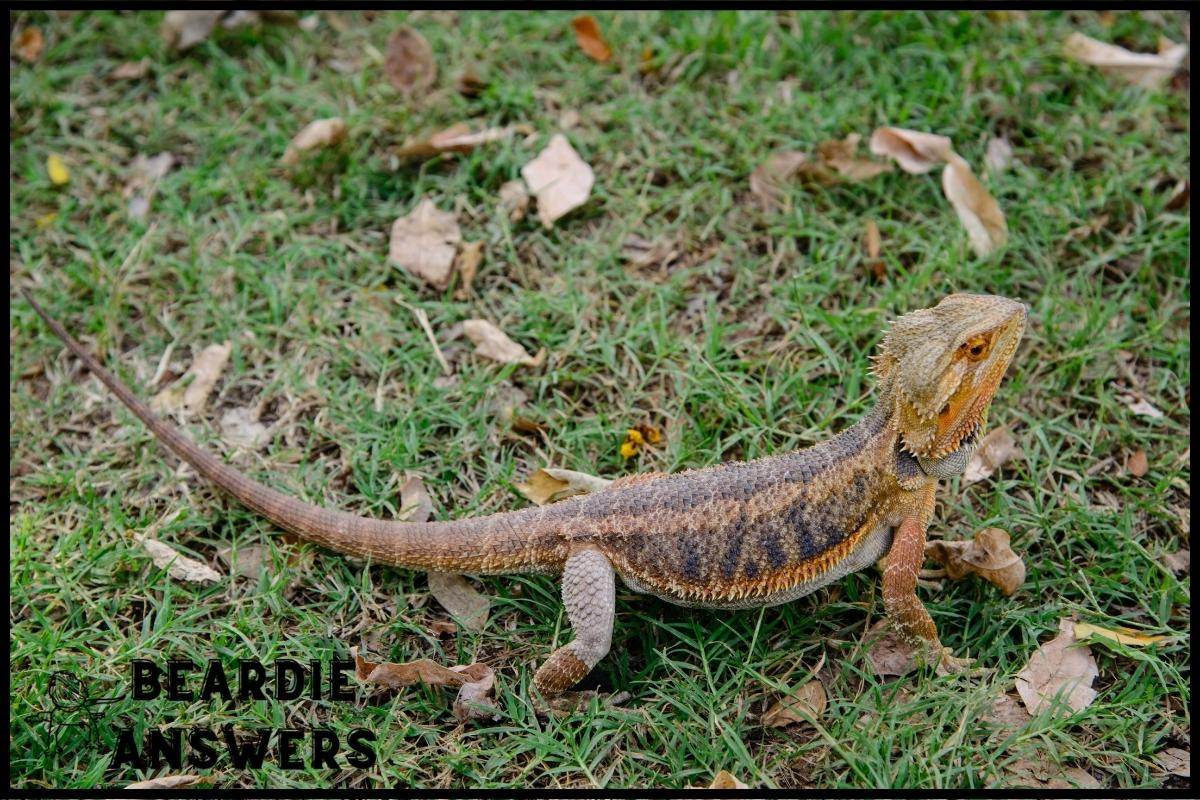Peas can be a nutritious addition to a bearded dragon’s diet when offered in moderation. However, they should not be a staple food as they contain a high amount of phosphorus, which can be harmful to bearded dragons if overfed.
What You'll Learn
Understanding The Nutritional Benefits Of Peas
Storing peas is relatively easy compared to other vegetables – they can be kept in the refrigerator for up to a week, or frozen for up to three months. It’s important to note that while freezing them will help them retain their nutritional value longer than refrigerating, it also makes them more vulnerable to spoilage due to over-ripening and bacterial growth.
Peas are generally considered safe for bearded dragons, but you should always check with your veterinarian before introducing any new food into your pet’s diet. It’s also best practice to thoroughly wash all produce prior to feeding it – especially if fresh from the garden! In addition, make sure not to feed too many at once as this could lead to digestive issues.
When done correctly and judiciously, peas can offer a range of health benefits for bearded dragons such as fiber and essential vitamins and minerals. Moving on…
Feeding Peas To Your Bearded Dragon
Peas are a great addition to your bearded dragon’s diet, as they provide essential vitamins and minerals that help contribute to their overall health. But before you start feeding peas, there are some things that need to be taken into consideration.
Like all other foods, it’s important to prepare them properly and serve in proper portion sizes for optimal nutrition. When preparing peas for your bearded dragon, make sure you rinse off any dirt or debris from the outside of the pea first. Blanching is also recommended since this helps soften up the peas and makes them easier for your lizard to digest. If using canned peas, just simply drain out any liquids before serving.
When deciding on how much of the pea should be served at one time, consider only giving about ¼ – ½ cup per meal depending on size of the animal – moderation is key! In order for bearded dragons to receive all the benefits that come with eating peas while avoiding potential risks, maintaining consistent control over their intake is necessary.
Although providing an occasional treat every now and then won’t hurt too badly, making sure not to go overboard will keep them healthy and happy in the long run. Moving forward onto moderating pea intake for optimal health…
Moderating Pea Intake For Optimal Health
Now that we know bearded dragons can have peas, it is important to understand how to moderate their intake for optimal health.
Too much of any food item can lead to digestive issues and an imbalance in the vitamins a beardie needs to stay healthy. It is therefore essential to understand what makes up a balanced diet for your pet reptile.
Peas are high in fiber and other nutrients which are beneficial for bearded dragon digestion. However, with too many they may suffer from bloating or even malnutrition due to an overabundance of certain vitamins not present in other foods eaten by the animal.
To prevent these problems, it is best practice to feed only small amounts of peas at a time, no more than once per week. This will ensure that the nutrient balance remains intact while still providing enough dietary fiber for proper digestion.
It is also important to be aware of different varieties of peas and their nutritional content when selecting them as part of your beardie’s diet. For example, green peas contain higher levels of protein compared to yellow ones, so taking this into consideration can help you provide your pet with the most nutritious options available.
Moving forward, understanding the different types of peas available will allow you create the perfect meal plan for your beloved companion!
The Different Types Of Peas
Peas are a versatile and nutrient-rich vegetable, but many people don’t know the different types of peas available.
On one hand, there’s the crunchy, sweet taste of fresh green peas – the kind you find in summer salads or atop your favorite pizza. Fresh green peas have a mild sweetness and crunchiness that pairs well with savory dishes such as salads, pizzas, stir fries, and more! They also contain higher amounts of water than other types of peas so they cook faster.
On the other hand, dried and split peas offer their own unique flavor profile that can be used to make soups or stews. Dried peas need to be soaked for several hours before cooking because they lose much of their moisture during drying. However, once cooked they become tender and creamy which makes them ideal for use in soups and stews. Additionally, dried peas offer great nutritional benefits due to their high fiber content. Split peas take less time to prepare than dried ones since no soaking is required; simply rinse them off before boiling or simmering until soft. Both yellow and green varieties provide an earthy flavor when cooked and are often used as a thickening agent in soup recipes.
No matter which variety you choose – whether fresh or dry – all forms of edible pea pods provide essential vitamins like Vitamin A and C along with minerals like iron and zinc to help support overall health.
Moving on from here we will explore how best to combine these delicious vegetables with other foods for optimal nutrition and taste.
Combining Peas With Other Foods
Now that we have a better understanding of the different types of peas, it’s time to explore how they can be combined with other foods. Peas are an excellent source of fiber, vitamins and minerals- making them one of the healthiest vegetables around. When incorporated into your diet in moderation, they can provide numerous benefits for gut health and calcium balance.
Here is a table outlining some great combinations featuring peas:
| Food Combination | Nutritional Benefits | Preparation Tips |
|---|---|---|
| Rice & Peas | High in Fiber | Boil rice before mixing in cooked peas |
| Quinoa & Peas | Source of Protein | Saute quinoa before adding pre-cooked peas |
| Soup & Peas | Low Carb | Simmer soup for 2 hours; add frozen/fresh peas 5 minutes before end of cooking time |
These combinations offer a delicious way to incorporate more nutrients into your meals without sacrificing flavor or convenience. Plus, you’ll get the satisfaction knowing that you’re doing something good for your body! With this knowledge under our belt, let’s move on to identifying signs of unhealthy pea consumption.
Identifying Signs Of Unhealthy Pea Consumption
When providing vegetables for bearded dragons, peas can be an important part of their diet. However, it’s important to monitor how much they are eating in order to keep them healthy.
Over-consumption of peas can lead to digestive issues such as bloating or constipation, which could cause discomfort and even more serious health problems if left untreated.
Bearded dragon owners should watch closely for signs of unhealthy pea consumption. These include excessive gas, reduced appetite, diarrhea or vomiting, weight loss, and changes in behavior like lethargy or reluctance to move around.
If any of these symptoms appear after a meal with peas is given it’s best to stop feeding the reptile until the issue resolves itself.
A balanced diet that includes other vegetables and sources of protein is essential for optimal beardie health. Too many peas at one time can create digestive upset so it’s better to give small portions throughout the day rather than all at once.
Additionally, providing fresh water daily will help promote good digestive health overall and reduce potential risks associated with too many peas in a bearded dragon’s diet.
Conclusion
It’s clear that peas can be a beneficial part of your bearded dragon’s diet, as long as they are fed in moderation. When done correctly, feeding them can provide important vitamins and minerals to help keep your pet healthy.
However, it is essential to monitor their consumption closely so you don’t overfeed or underfeed them. If I notice any signs of unhealthy pea intake, such as decreased energy or appetite, I’ll make sure to adjust the quantity accordingly.
By doing this, I’m confident my beardie will enjoy the delicious taste of peas while also receiving all the nutritional benefits they have to offer!

Hi! My name is Bryan, I am the “one behind the words” here are BeardieAnswers.com. I believe that providing quality care and nutrition is the best way to ensure the health of your pet. Every beardie is special and deserves the best care and attention. If you have questions about your bearded dragon, please don’t hesitate to ask! View My Full Author Page




